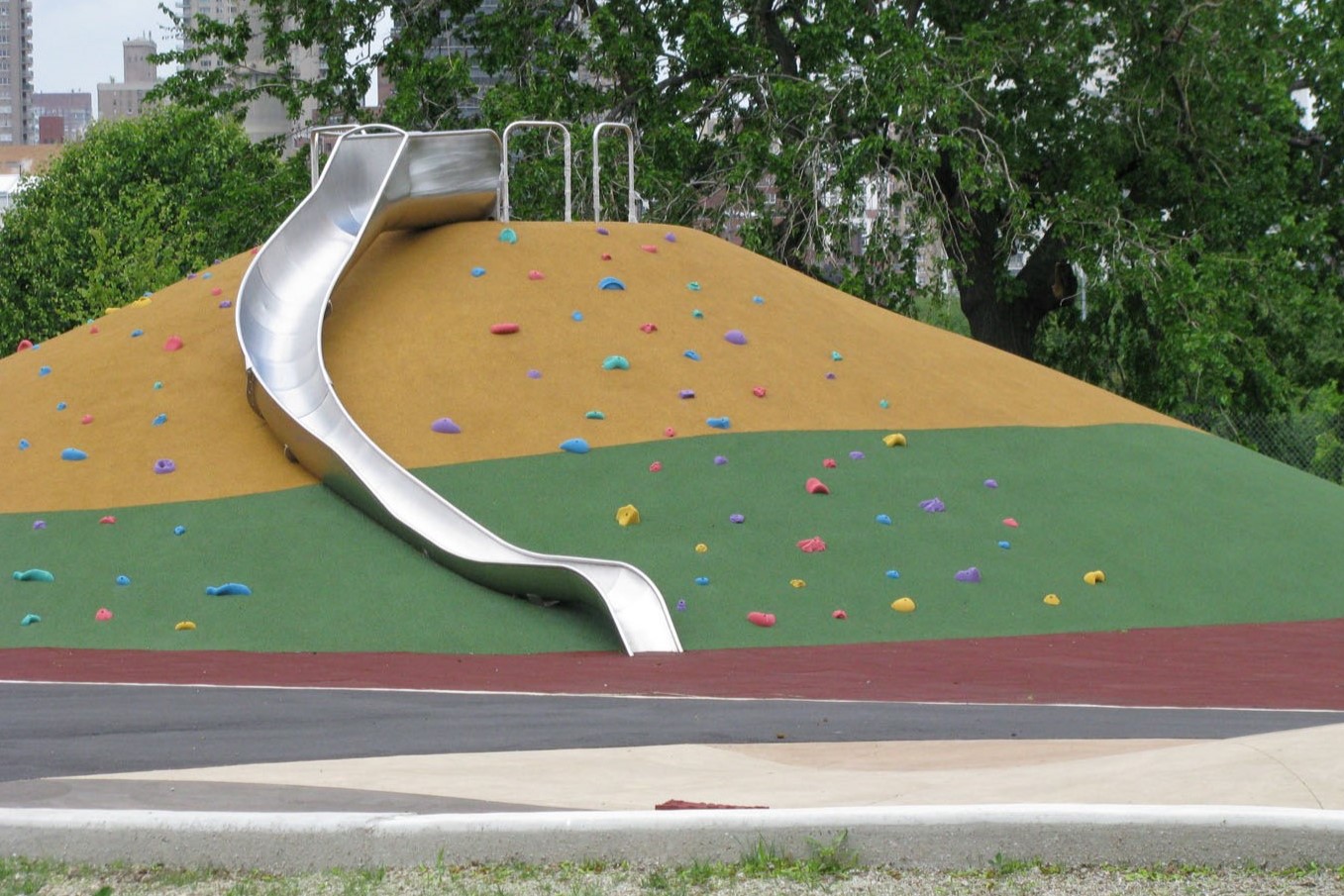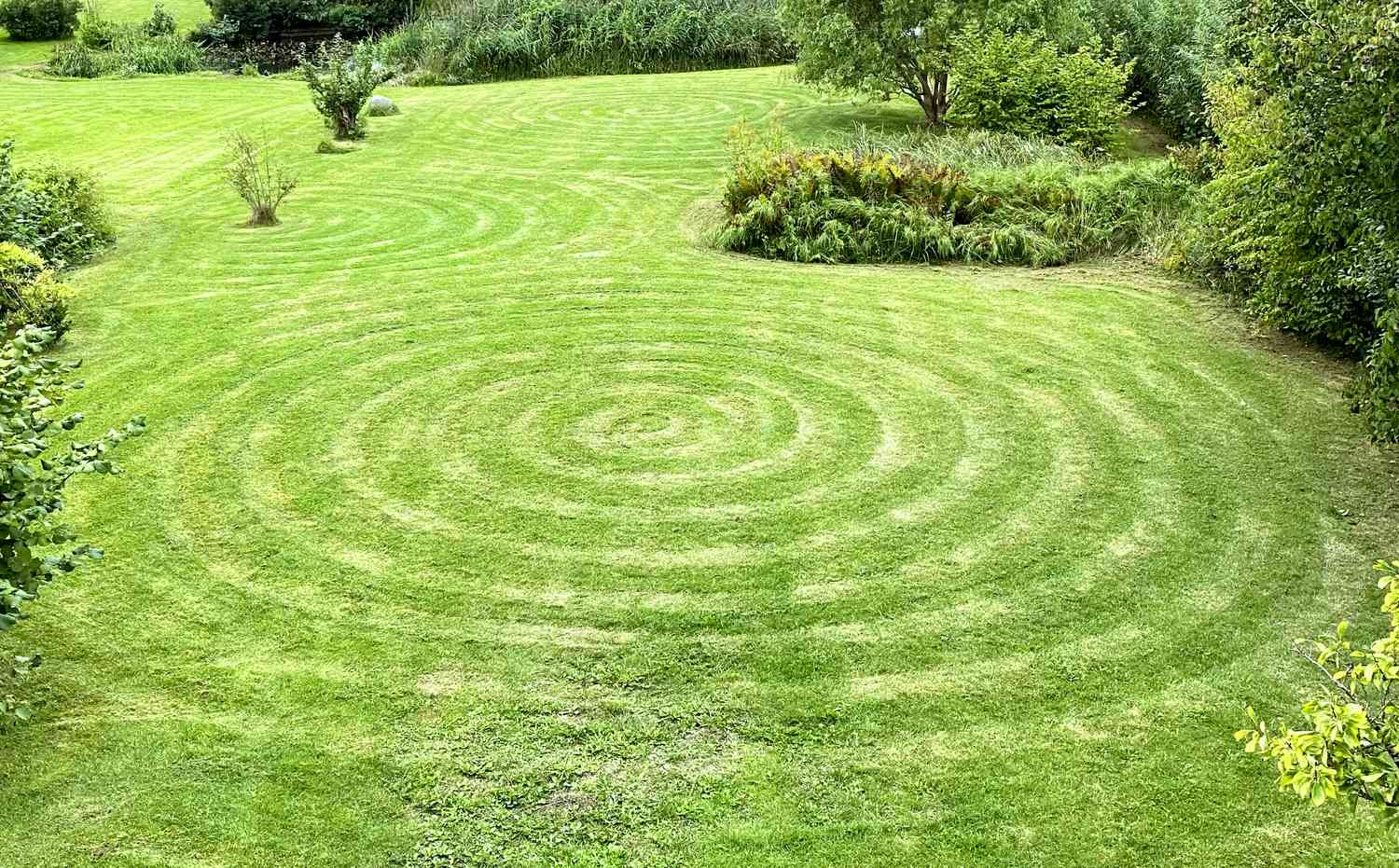Home>Gardening & Outdoor>Landscaping Ideas>How To Cut Grass On A Hill


Landscaping Ideas
How To Cut Grass On A Hill
Modified: January 27, 2024
Learn the best landscaping ideas for cutting grass on a hill with our expert tips and techniques. Keep your yard looking pristine and well-maintained with our helpful advice. Discover how to tackle this challenging task with ease.
(Many of the links in this article redirect to a specific reviewed product. Your purchase of these products through affiliate links helps to generate commission for Storables.com, at no extra cost. Learn more)
Introduction
Landscaping a hilly terrain can be a challenging yet rewarding task. The undulating slopes add character to a property, but they also require special care and attention when it comes to lawn maintenance. One of the essential aspects of hillside landscaping is the proper maintenance of the grass. However, mowing grass on a hill is not as straightforward as it is on flat ground. It requires a different approach, specialized equipment, and a keen understanding of the terrain.
In this comprehensive guide, we will delve into the nuances of cutting grass on a hill, providing valuable insights into understanding the terrain, selecting the right equipment, implementing safety precautions, and employing effective techniques. By the end of this article, you will be equipped with the knowledge and confidence to tackle hillside grass cutting with ease and efficiency.
Key Takeaways:
- Mowing grass on a hill requires special equipment, safety precautions, and techniques to ensure a well-maintained lawn and a hazard-free process.
- Understanding the terrain, choosing the right equipment, and employing strategic mowing techniques are essential for safely and effectively cutting grass on a hill.
Read more: How To Cut Grass On A Steep Hill
Understanding the Terrain
Before embarking on the task of cutting grass on a hill, it is crucial to familiarize yourself with the unique characteristics of the terrain. Hillsides present a set of challenges that differ from those encountered on flat ground. Understanding the terrain is essential for ensuring the safety of both the landscaper and the integrity of the landscape.
One of the primary considerations when dealing with hilly terrain is the slope gradient. Steep slopes pose a higher risk of accidents and equipment slippage, while gradual slopes may still require careful maneuvering. Additionally, the type of soil and its moisture content can significantly impact the stability of the ground. It’s important to assess the soil’s composition and drainage to gauge its firmness and potential for erosion.
Furthermore, the presence of obstacles such as rocks, tree roots, and uneven surfaces can further complicate the mowing process. These obstacles not only pose a challenge to maneuvering the equipment but also increase the risk of tripping or losing control of the machinery.
Lastly, it’s essential to consider the direction of the slope concerning the sun’s movement. The exposure to sunlight can affect the moisture levels of the grass and soil, influencing the ideal time for mowing and the overall health of the lawn.
By familiarizing yourself with these aspects of the terrain, you can better prepare for the challenges ahead and tailor your approach to effectively and safely cut grass on a hill.
Choosing the Right Equipment
When it comes to mowing grass on a hill, having the appropriate equipment is paramount to ensure efficiency, safety, and optimal results. The right tools can make a significant difference in maneuvering the terrain and maintaining the quality of the grass. Here are some essential considerations for selecting the right equipment:
- Lawn Mower: For hillsides, a self-propelled lawn mower with high rear wheels is highly recommended. These mowers offer better traction and maneuverability on uneven terrain. Additionally, consider a mower with a low center of gravity to minimize the risk of tipping over.
- String Trimmer: A string trimmer or weed eater is invaluable for reaching areas that are inaccessible to a lawn mower. It is ideal for tidying up edges, around obstacles, and along steep inclines where a mower cannot reach.
- Protective Gear: Safety should always be a priority. When working on hillsides, wear sturdy, slip-resistant footwear, eye protection, and gloves to ensure a secure grip on the equipment and protection from debris.
- Attachments and Accessories: Depending on the specific terrain and obstacles, consider attachments such as brush guards, wheel extensions for stability, and deflector kits to minimize the risk of debris projection.
Moreover, regular maintenance and inspection of the equipment are crucial. Ensure that the mower blades are sharp, the tires are properly inflated, and all safety features are functional. It’s also advisable to familiarize yourself with the operation of the equipment on level ground before tackling hillsides to build confidence and proficiency.
By investing in the right equipment and maintaining it diligently, you can streamline the grass-cutting process and mitigate potential risks associated with hilly terrain.
When cutting grass on a hill, always mow across the slope rather than up and down. This will help prevent the mower from tipping over and make the job safer and easier.
Safety Precautions
Working on hilly terrain introduces a unique set of safety concerns that must be addressed to minimize the risk of accidents and injuries. Prioritizing safety measures is essential for both professional landscapers and homeowners undertaking lawn maintenance on sloped areas. Here are crucial safety precautions to observe when cutting grass on a hill:
- Assess the Terrain: Before beginning any mowing or landscaping activities, carefully assess the slope and identify potential hazards such as rocks, tree roots, and uneven ground. Clear any debris or obstacles that could impede safe equipment maneuvering.
- Wear Appropriate Footwear: Sturdy, slip-resistant footwear with good traction is essential for maintaining stability on uneven surfaces. Avoid open-toed shoes or footwear with inadequate grip.
- Mow in Dry Conditions: Mowing wet grass on a hill can increase the risk of slips and equipment skidding. Aim to mow when the grass and soil are dry to ensure better traction and stability.
- Operate Equipment Mindfully: When using a lawn mower or trimmer on a slope, exercise caution and maintain a firm grip on the equipment. Avoid sudden movements, and be mindful of the machine’s center of gravity to prevent tipping.
- Stay Hydrated: Working on hillsides can be physically demanding. Stay hydrated and take regular breaks to prevent exhaustion and maintain focus during the mowing process.
- Establish Clear Communication: If working in a team or with assistants, establish clear communication to coordinate movements and ensure everyone’s safety. Use hand signals or verbal cues to indicate equipment operation and movement on the slope.
- Be Aware of Surroundings: Maintain awareness of your surroundings and be mindful of potential hazards, including wildlife, steep drop-offs, and other individuals in the vicinity.
- Follow Equipment Safety Guidelines: Adhere to the manufacturer’s safety guidelines for the operation of lawn mowers and trimmers. Familiarize yourself with the equipment’s safety features and use them as intended.
By implementing these safety precautions, you can significantly reduce the risk of accidents and create a safer working environment when mowing grass on a hill.
Techniques for Cutting Grass on a Hill
Mowing grass on a hill requires a strategic approach to ensure an even cut, maintain stability, and preserve the health of the lawn. By employing the following techniques, you can effectively manage the mowing process on hilly terrain while achieving optimal results:
- Assess the Slope: Before starting, evaluate the slope’s steepness and identify the direction of the incline. Begin mowing at the lowest point of the hill and move sideways across the slope rather than up and down. This lateral movement minimizes the risk of equipment tipping and provides better stability.
- Use a Slow and Steady Pace: When mowing on a hill, maintain a slow and steady pace to ensure control and prevent slippage. Avoid abrupt turns or changes in direction, as they can compromise stability and traction.
- Overlap Mowing Paths: Overlapping mowing paths by a small margin helps achieve an even cut and prevents the formation of uncut patches on the slope. It also reduces the need for sharp turns, which can be challenging on inclines.
- Utilize the Right Equipment: As mentioned earlier, using a self-propelled lawn mower with high rear wheels provides better traction and maneuverability on slopes. Additionally, employing a string trimmer for areas inaccessible to the mower ensures a thorough and uniform cut.
- Trim Edges and Borders: Pay attention to the edges and borders of the hill, as these areas often require precision trimming. A string trimmer is ideal for tidying up the perimeters and maintaining a polished appearance.
- Alternate Mowing Patterns: To minimize soil compaction and promote uniform grass growth, vary the mowing patterns with each session. Alternating between horizontal, vertical, and diagonal mowing directions helps prevent the grass from developing a directional grain and encourages healthier growth.
- Regular Maintenance: Keep the mower blades sharp and the equipment well-maintained to ensure a clean cut and prevent damage to the grass. Additionally, promptly address any mechanical issues to avoid complications during mowing.
By implementing these techniques and exercising caution, you can effectively navigate the challenges of mowing grass on a hill while maintaining the aesthetics and health of the landscape.
Read more: How To Grow Grass On A Hill
Conclusion
Maintaining a well-groomed lawn on hilly terrain presents unique challenges that require a tailored approach and careful consideration of the landscape’s characteristics. By understanding the terrain, selecting the right equipment, prioritizing safety precautions, and employing effective mowing techniques, you can successfully navigate the intricacies of cutting grass on a hill.
It is essential to approach hillside mowing with patience, attentiveness, and a focus on safety. Assessing the slope, identifying potential hazards, and using appropriate equipment are fundamental steps in ensuring a smooth and hazard-free mowing process. Additionally, prioritizing safety measures such as wearing proper footwear, staying hydrated, and maintaining clear communication further enhances the overall safety of the operation.
Employing specialized techniques, such as lateral mowing, overlapping paths, and varying mowing patterns, allows for an even and well-maintained lawn on hilly terrain. Regular maintenance of equipment and adherence to safety guidelines are crucial for achieving consistent and satisfactory results while mitigating potential risks.
By incorporating these insights into your approach to hillside grass cutting, you can enhance the aesthetics of the landscape, promote the health of the grass, and create a safer working environment. Whether you are a professional landscaper or a homeowner tending to your property, mastering the art of cutting grass on a hill empowers you to maintain a beautiful and healthy lawn on challenging terrain.
With the knowledge and techniques outlined in this guide, you are well-equipped to tackle the task of mowing grass on a hill with confidence and proficiency, ensuring that your hillside landscape remains a source of pride and beauty.
Frequently Asked Questions about How To Cut Grass On A Hill
Was this page helpful?
At Storables.com, we guarantee accurate and reliable information. Our content, validated by Expert Board Contributors, is crafted following stringent Editorial Policies. We're committed to providing you with well-researched, expert-backed insights for all your informational needs.















0 thoughts on “How To Cut Grass On A Hill”